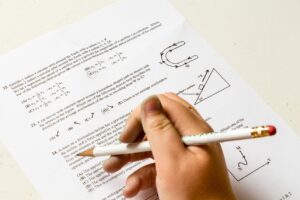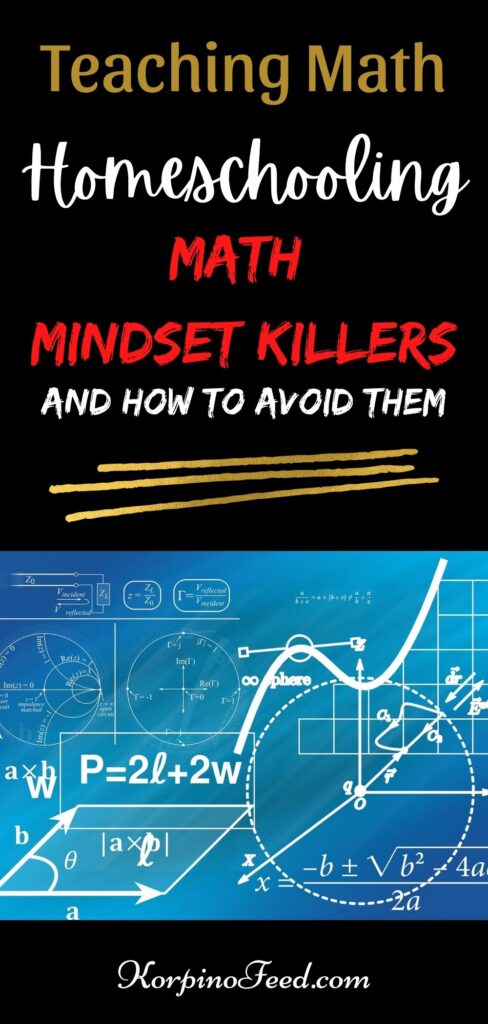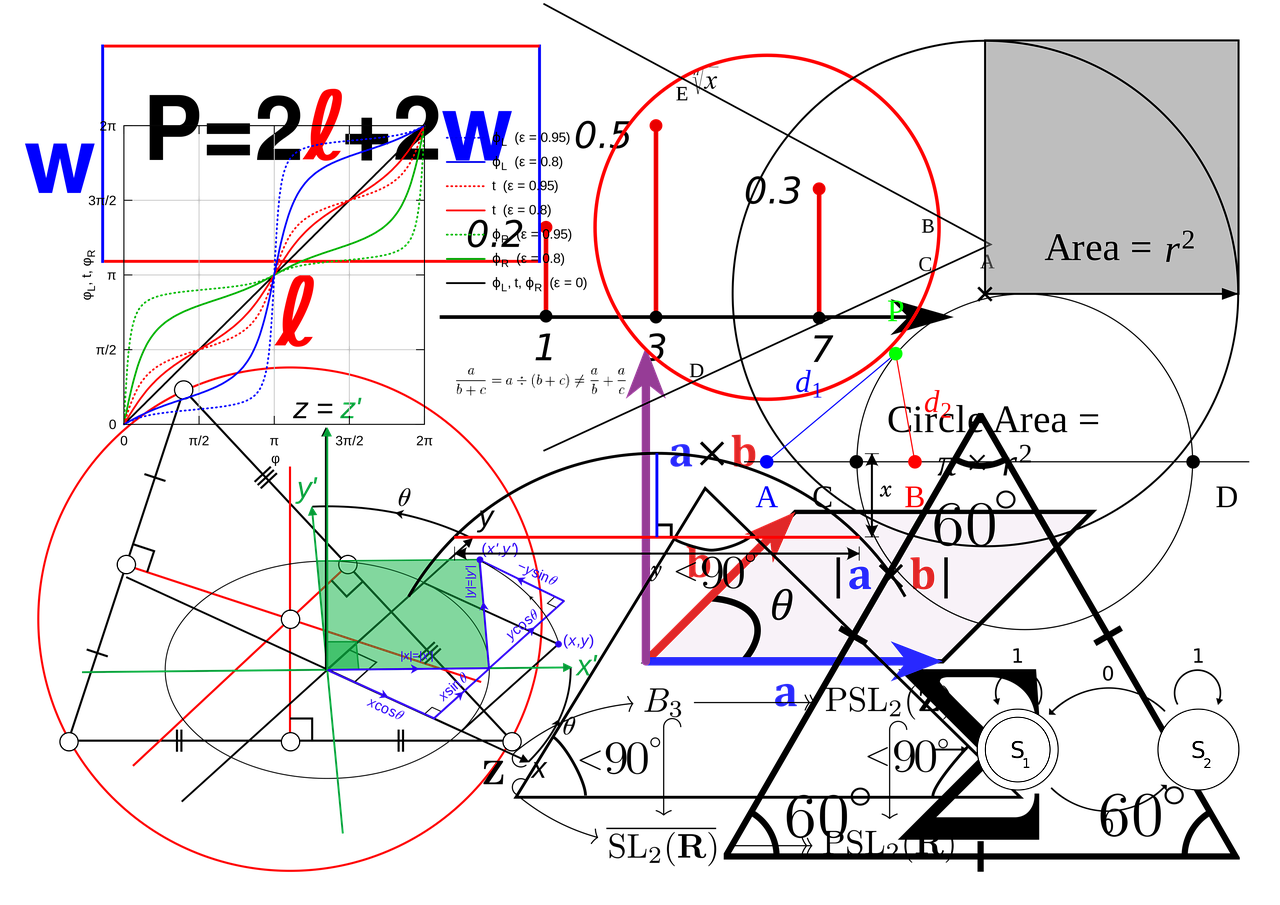This post may contain affiliate links. Please read the disclosure policy.
The Mathematical Thinking in Mathematics
During the 7th grade, to my surprise, the announcements informed the student body that I was the recipient of the Student of a Month award. Of all subjects, I was nominated by my math teacher. Not that I did not like math, but I just did not think that I was that good at it. When I asked my teacher about it, he plain and simply told me that I deserved it. This short conversation changed my whole mentality about the subject, and it is a mentality that I am teaching my kids during homeschooling and mathematics.
Since the 7th grade, all the way through my career in education, Math has been my favorite subject. I was never in the highest level of mathematics for any grade level, but that might have to do more with my personal application. I like math because of the patterns and logic that serve as the foundation for just about everything that you can do. Even in college, when I got to statistics, I was challenged at first but then recognized the patterns within the formulas. I knew that the process and the answers were there. I just had to find it within me, to figure it out. So, the key factor for me was a positive mindset.
Common Math Mindset Killers
Homeschooling and mathematics is an ideal situation to educate and reduce the number of variables that deter kids from progression. Having a healthy, positive mindset with mathematics is crucial. This should be built from the beginning. Without it, it is difficult to recognize the patterns and logic. It is frustrating to know that many kids will not do well in math even before they get a chance to problem solve.
Mixed Messages
A positive math mindset should be fostered early in a child’s youth. Even if present, a mindset can be turned instantly from none other than the adults around them. As a teacher, I have sat through numerous Parent/Teacher conferences where one or both of the parents say things like, “I was never good at math.” While I appreciate the honesty, there is a message that the child is receiving with this parental outlook on mathematics. It does not end there. Throughout my eighteen years in education, I have also heard teachers say to students “Math was never for me” or “Math and I were” while motioning their fists clashing. For sure, I know that we have all heard someone say, “Well, math is not for everyone.”
When students hear these things, they receive a message that potentially gives them permission to share those views of math. These messages are from the people who influence them the most. We obviously know that we need to watch what we say in the presence of our children. We may not think that being honest about our academic history is not harmful, but it is. Honesty is the best policy, but always follow it up with a reason for an opposite action and be sure that is the emphasis of your discussion.
Scope and Sequences
My heart goes out to all classroom teachers. They are at a constant tug of war battle with district/state timelines and what is best for each of the thirty plus students in a classroom. Differentiation, or the process of meeting all student needs through multiple teaching strategies is easier said than done. With the pressures of the upcoming benchmark test or state test, teachers feel the anxiety of having to move on. Because the progression of mathematics is a block building process, if the foundation is absent or weak, the student’s ceiling for learning is very low. There is nothing more defeating for a child to see others move on. This of course is not an issue with homeschooling and mathematics.
Missing the Basic Pieces
For most students, their struggles with mathematics comes from that absence or weak foundation of the basics, or Number Sense. This is a symptom of the scope and sequence timeline. These kids struggle throughout their education because they don’t have the adequate skills to move onto Algebra or Geometry. At this point they are at a stage of trying to make sense of a language of numbers, without the conceptual knowledge of arithmetic. With good intent, they are pulled for small group instruction, given extra practice and later put in remedial classes. Again, there is that feeling of defeat that will kill the mindset of many students. Again, less of an issue with homeschooling and mathematics.
Building a Mathematical Mindset
At this point, I will come out and say it, mathematics ability is more so a mathematical mindset rather than mathematical application. What does that mean? At some point in our mathematical history the equal sign (=) became a symbol for “the answer is”. With this, mathematics became of system of finding the right answer to show your mathematical proficiency. This removed the exploration and experimentation with numbers. The equal sign (=) should be seen as a balance, one side of an equation has the same value as the other side. Imagine the mindset of children knowing that they are finding a balance versus a correct answer. It promotes more exploration.

Common Core State Standards shifted the mathematical thinking to encourage the growth of mathematical understanding and recognizing it as just as important as its procedural skills. To guide students with this type of thinking, the standards included Standards for Mathematical Practices. In short, most professions have their standards in the way they go about their practices, to be successful. The eight Mathematical Practices did the same for students in a math class. In my opinion, this is a great way to improve students’ conceptual knowledge of math and have the ability to reason with their thinking. This shift would definitely take time for students to adjust. At the same time, teachers and students were still responsible for scope and sequence timelines for assessments. So the standards changed but the expectations remained the same. You guessed it, not an issue with homeschooling and mathematics.
For more information on the Common Core State Standards for Mathematics: http://www.corestandards.org/Math/
Going Back to the Basics for Homeschooling and Mathematics
Actually Going Back in Time
Homeschooling and mathematics also provides us with an opportunity to deviate from the expectations of a district prescribed scope and sequence. Now we have to go back and teach mathematics in its purest form, a recognition of patterns in nature. As homeschooling parents, I strongly recommend showing your kid(s) a video that we all probably watched as kids and has long since been forgotten.

Released in 1959 and shown in schools throughout the 1960s, Donald Duck starred in Disney’s Mathmagic Land. Hunting Donald finds himself lost in an unfamiliar land. His first interaction is with stork looking animal with a pencil as his head. Donald follows the animal’s trail of numbers written on the ground. When he catches up to the pencil stork, it immediately challenges Donald to a game of tic-tac-toe. Donald loses after just two moves. This scene is foreshadowing for what is to come for our friend Donald. A lesson in the true nature of mathematics.
As you and your homeschooler(s) watch the thirty-minute video, you will be surprised that mathematical origins have very little to do with the mathematics that we apply today. We know mathematics as portrayed in a textbook, worksheets or on an assessment, but we miss the representation of math in music, art or just about everything, as stated in the video. When we isolate math to the confines of a school subject, we are limiting our potential to fully understand it.
Enjoy Donald in Mathmagic Land: https://youtu.be/U_ZHsk0-eF0
Let’s Take This a Little Further
Fully understanding mathematics consists of mathematical thinking apart from the academic application of it. In his 2008 book, the Outliers, Malcolm Gladwell looked into factors at what makes certain people successful. He looked into the stereotype of Asians having high IQs and outperforming the rest of the Western kids in mathematics. His Research found that the Asian kids had a different mentality towards math. He learned that Asian students did not see mathematics as a system of memorized facts or functions. They saw it as something sensible, with a pattern that they can figure out. They also put mathematical terms in a conceptual sense and were able to carry more numbers in their head and make calculations at a faster rate.

So, he questioned, “What gave the Asian students an advantage in math?” It was innate in their culture, but how? The common denominator that he found through his investigation were the rice paddy fields. He noted that Western agriculture is primarily “mechanical” while the Eastern Rice Paddy farming is “skill based”. He mentioned all of the time, hard work and mathematical thinking that it takes for the necessary precision to yield a successful harvest. Basically, the harder you work, the more that you will get. Like all farmers, the well-fare of their families depends on successful harvests.
One More Example
In the Punjab village of Thulewal, the Singh family farm is dealing with a depleting groundwater crisis. Constant extraction, use of pesticides and climate change has been impacting the water source for all farmers. The father and son team, learned a more organic means of farming, grew sandalwood and dragon fruits, with used 90% less water than the traditional crops grown in the area. They used a Vietnamese, hallow pole technique to grow their dragon fruit. On a little more than an acre of their land, he planted 500 dragon fruit plants with this technique. They estimated that during the first year, they would yield four to five kilograms of fruit, quadrupling by the fifth year.
Think about how much mathematical thinking this father and son team are using to maintain a profitable livelihood. From the economic use of water to the projected harvest, everything had a mathematical representation. If given a math problem that they have never seen, my guess is that they would have the ability to at least come up with conjectures or feasible guesses to how to come up with an answer.
Creating a Rice Paddy for Homeschooling and Mathematics
For all of us that are homeschooling, are you ready to create a rice paddy for mathematics? If you do that, please send me some pictures. I’d love to see them. To help build an innate ability to mathematically think and reason, incorporate a math environment outside of math. As a part of science, include your homeschooling child/children with gardening. Take the time to recognize patterns in nature, in music or in art. Play games that consists of mathematical thinking. Have them help cook lunches, measuring out ingredients. Encourage the arts. Through my career, I have found that students who do well in math also played instruments or loved to draw. When playing, emphasize mathematical terminology when given the opportunity. “Stay in this area”, and physically walk or show that area. “You are out of bounds, if you cross this perimeter or leave this area,” once again providing a visual for each word. Have conversations, making the point that mathematical thinking is everywhere. Lastly, always encourage problem solving by communicating that math is sensible and we can find a pattern to logically figure it out.

